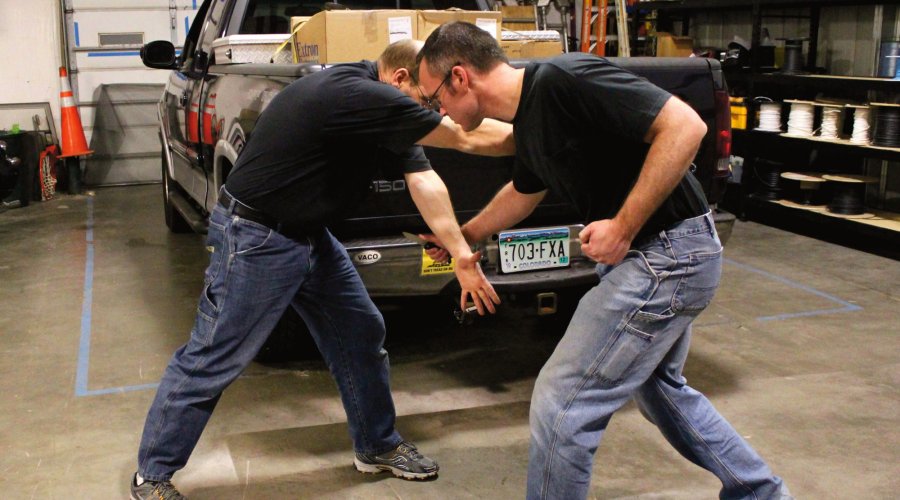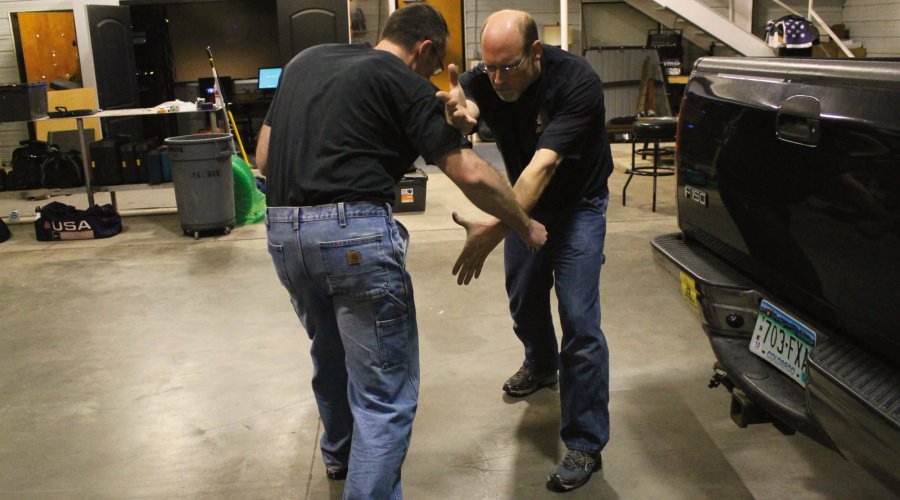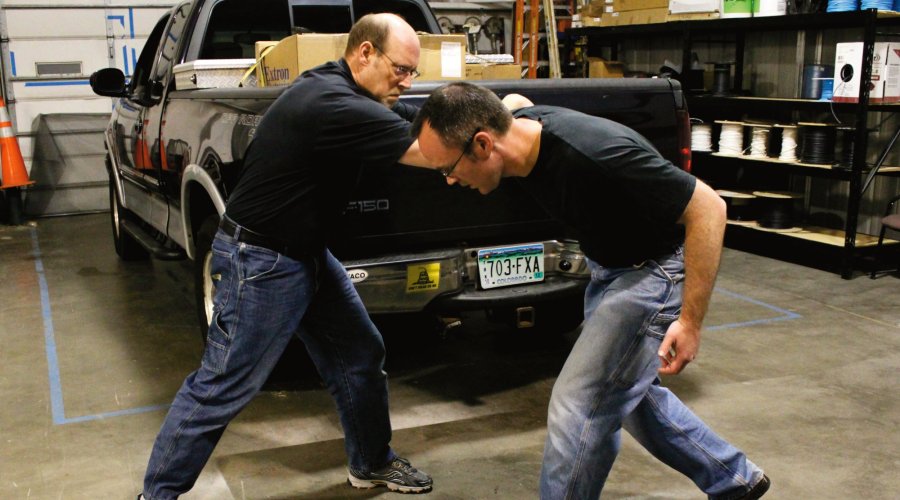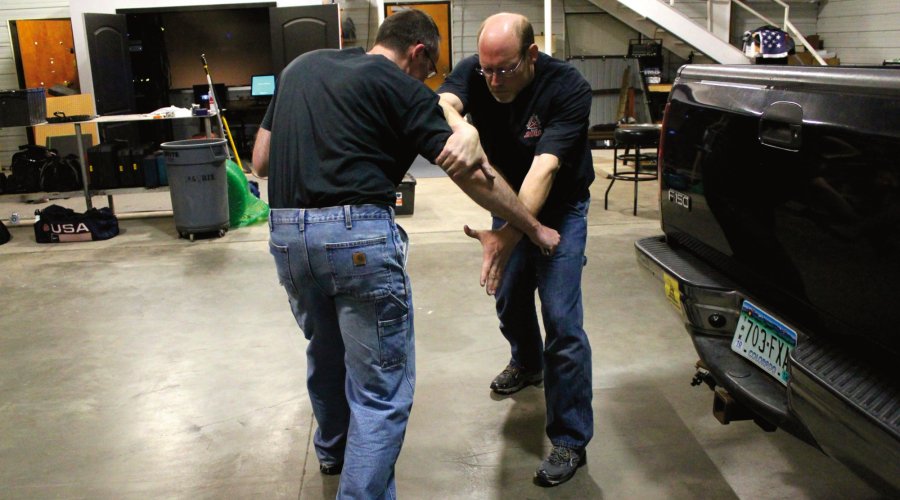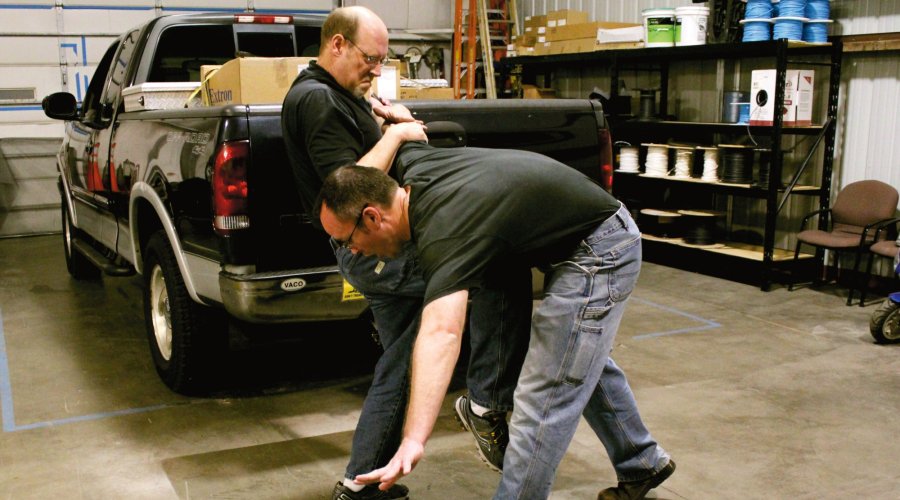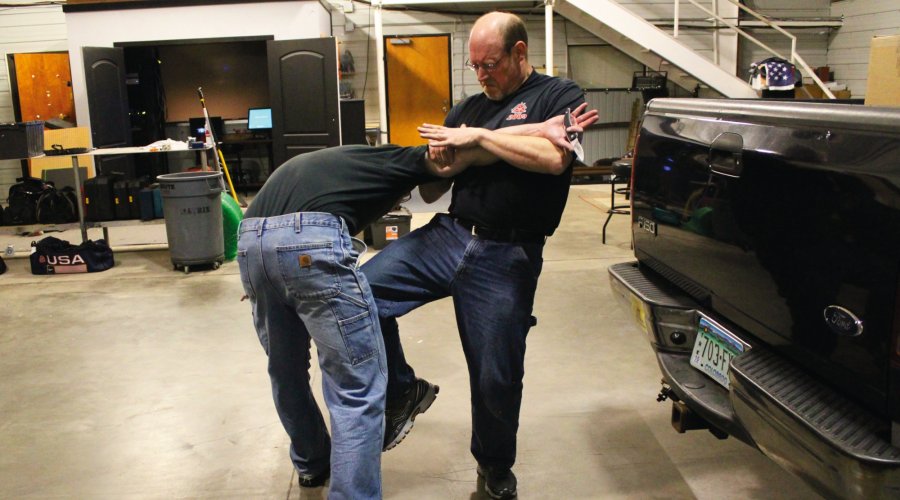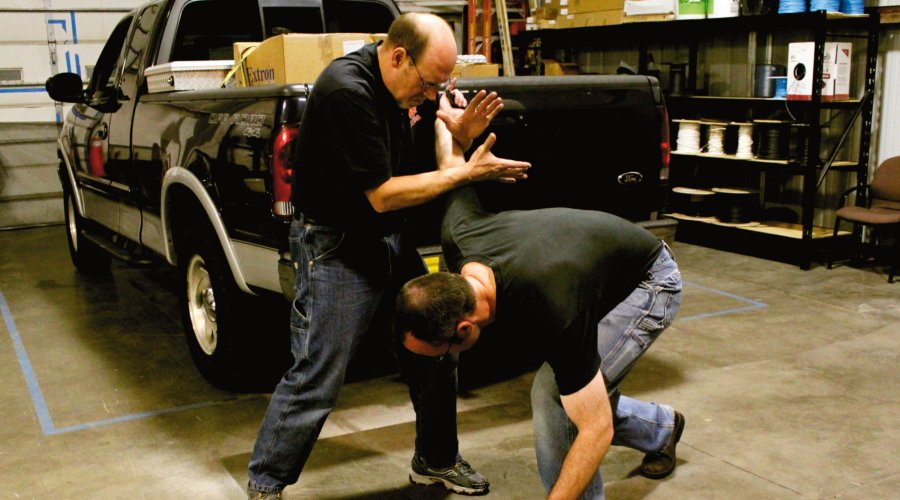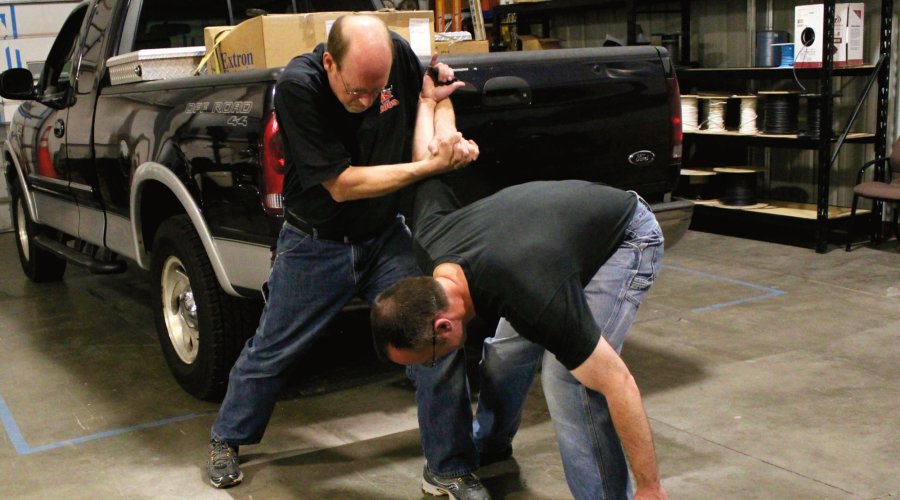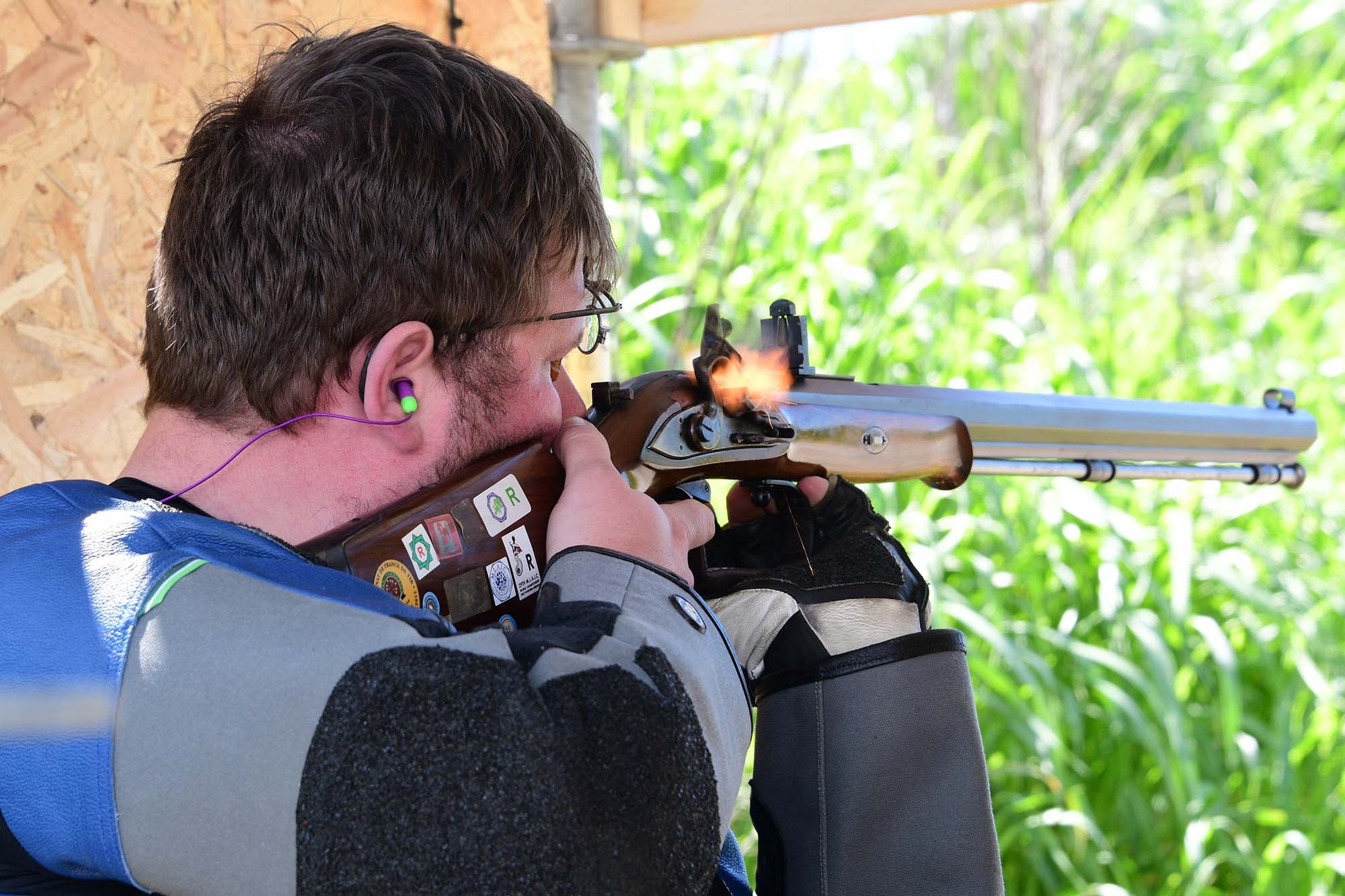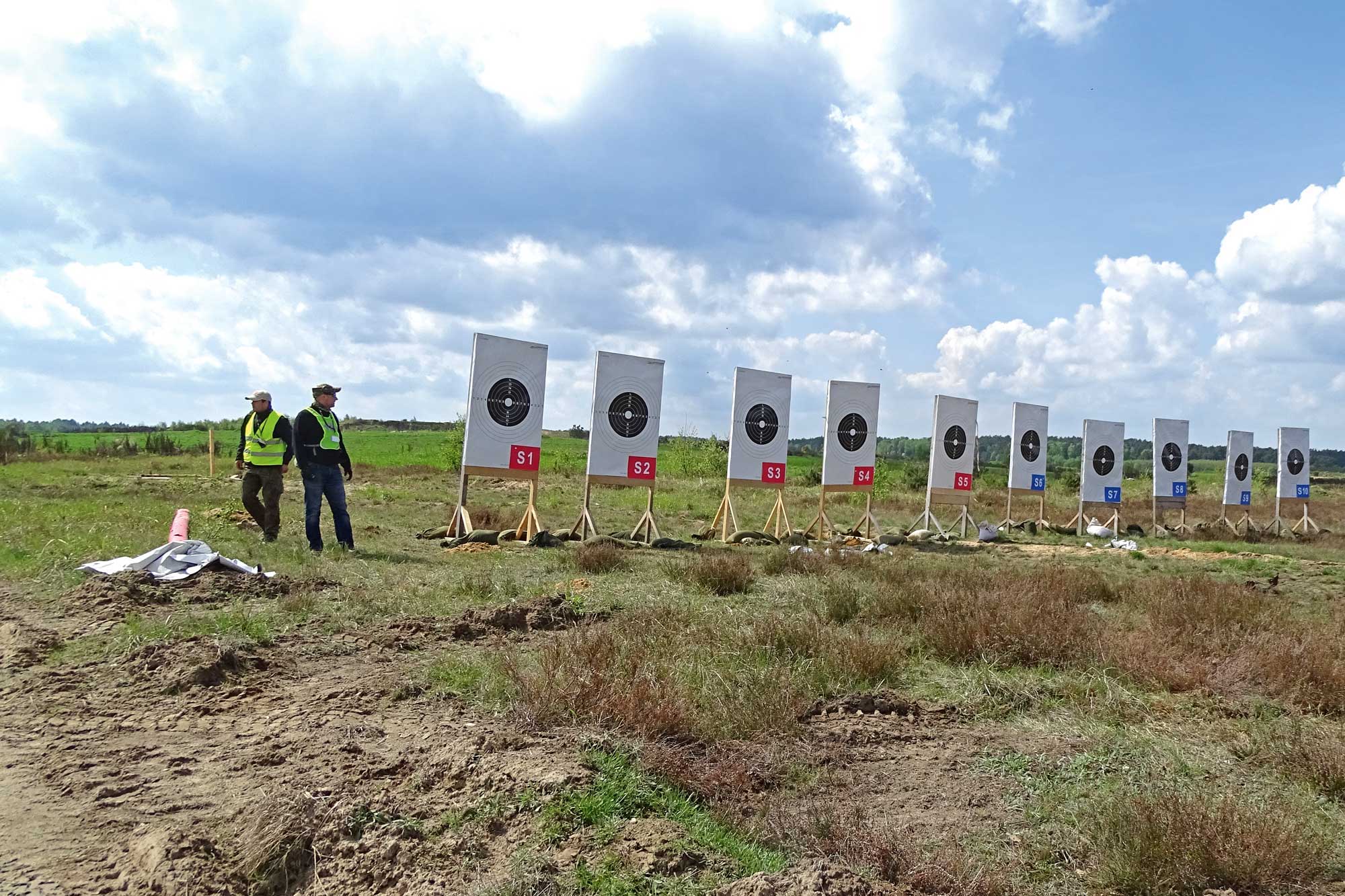Developing the CBC system isn't about having martial arts instructors let us spar in a certain way to make sure their techniques work and look good. After studying vast amounts of footage from real, recorded knife attacks, the author was able to explore the similarities of such incidents. Irrespective of origin or culture, people armed with a knife basically attack according to the same pattern of action. The most frequently observed method is as follows: the knife is held with a standard grip (i.e. the blade protrudes from the thumb side of the hand) and attempts are made to grasp the opponent and/or estimate the distance with the other hand, and then to stab the lower torso in an upward-pointing angle of movement towards the centre of the body. Because this type of knife attack dominates the world, CBC's main focus is on suitable defensive measures. In the previous installment we showed a defensive technique based on controlling the extended, unarmed arm of the aggressor. However, if the attacker does not extend his non-knife-wielding arm or we are unable to control it, we are forced to fend off the knife hand. To do this, we use again a CBC technique called "Split X".
Cross Defense - Relation to traditional defense techniques
The Split-X is similar to the “X” blocks seen in many traditional martial arts in that the extended arms cross in front of your body to fend off an attack. However, they don’t touch each other at the wrists. Blocking with your wrists crossed reduces the surface area of your block and makes it very easy for the attacker to trap both your arms by simply pushing down on your wrists. Note: for this reason, the author also does not like the "Harries technique" when using handguns and flashlights at night - especially not when combined with the "Low Ready" position.
The self-defense sequence
If the attacker strikes a blow with the knife in his right hand, drive your left arm low and slightly to your right so the back of your forearm impacts the attacker’s inner forearm. At the same time drive your right arm high so the back of that forearm strikes the attacker’s upper arm just above the elbow. At full extension, both your arms should be slightly crossed with your fingers open and your thumbs pointing up. This locks the skeletal structure of the arms and creates an extremely powerful block. As you do this, you will naturally “hollow out” — drawing your hips and stomach back to stay away from the danger area of the knife point.
After surviving the initial thrust, you must immediately control the attacker’s arm to make sure he can’t stab again. This is critical, since most attacks involve repetitive motions. From the Split-X block position, simply turn your right hand from thumb-up to thumb-down position and use your fingers to hook behind the attacker’s elbow. This will prevent him from retracting his arm to thrust again. Once you’ve hooked the elbow, use your back muscles to pull both your elbows back toward your ribs. As you do, pull the attacker’s arm into the center of your chest so your hands and his elbow stop right in front of your sternum. If performed correctly, this movement will rotate the attacker's arm at the shoulder, pulling him forward and bending him over.
This technique could also be combined with a simultaneous knee strike to the groin to ensure that the attacker's upper body bends over. The next motion is subtle, but very effective.From its position in front of your chest, open your right hand and turn it thumb-up. Using the ulna bone of the wrist, “saw” forward across the triceps tendon just above the attacker’s elbow. Properly performed, this technique is very painful and will force the opponent to bend the head forward and stretch the arm out completely. Done properly, this is amazingly painful and will cause his head to drop and his arm to straighten completely. At the end of this motion, your open right hand should be facing straightforward, thumb-up, as if shaking hands. The hands are brought together, creating an extremely stable lever based not only on muscular strength but also on the skeletal structure of our arms.
Keep your own safety in mind
To finish the technique, take a circular step back with your right leg. In this way we take ourselves or our sensitive body areas, such as the groin, out of the reach and danger area of the aggressor's left hand. if you’re carrying a pistol or other weapons on your right side, these are moved away from the aggressor's reach as well. The latter is also forced to lower his/her head even further forward and to step forward with his/her left foot to catch balance. These actions, along with the fact you’ve just “chambered” your right leg, make it very easy to disable the attacker with knee strikes to the head and/or stomp to the inside of the aggressor's left ankle.
Police officers' different approach
Officers whose regulations require an arrest may continue to pivot to their right, driving the aggressor's face down to the ground in order to put handcuffs on him/her. The "Split X" can be a truly life-saving self-defense technique. After teaching this technique to a police trainer in Canada, she contacted the author a year later describing how she had saved the lives of two police officers on duty. Try the "Split X" and I am pretty sure that this technique will become an integral part of your personal self-defense training
You can read the other parts of our series here:
- Basics of self-defense and the defense against the "swing" ·
- The defense against a “stranglehold” attack
- The standard sequence as the foundation of successful self-defense
- The defense against a common street attack: the collar grip
- The defense against improvised weapons
- Self-defense in ground fighting
- The defense against kicks on the ground
- Defense techniques with the walking stick
- Advanced stick techniques
- Knife defense with bare hands



